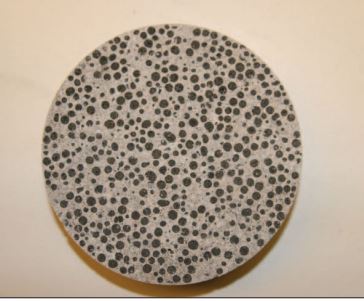Pervious Concrete is a special type of concrete that allows the water to percolate through it.
It is made from a mixture of cement, coarse aggregate, and water. There is an absence of sand in this concrete due to which it develops interconnected voids which make this concrete porous and allows water to percolate through it.
It is also known as Thirsty concrete.
Also Read: Foam Concrete
The Need for Pervious concrete
Nowadays, due to construction works, the Earth is being converted into a concrete island. There is no space available for the seepage of rainwater into the ground. Due to which it creates a major long-run problem of waterlogging in heavy rainfall areas.
In Metropolitan cities like Mumbai, every year waterlogging problem is faced during monsoon. The drainage system is not efficient to drain off all the rainwater from the ground.
The conventional concrete pavement roads are impermeable in nature which causes the problem of waterlogging. The best solution to this problem is to switch the impermeable concrete pavement by pervious concrete.
Engineering Properties of Pervious Concrete
- Water cement ratio: The water-cement ratio of pervious concrete generally ranges from 0.28 to 0.40
- Void Content: The void content ranges from 15% to 25%.
- Compressive strength: Generally it ranges between 3.8 MPa to 28 MPa.It depends upon the water-cement ratio if it is more, strength is less and vice-versa.
- Flow rate: The average flow rate of water through pervious concrete is about 0.34 m/s.
- Density: It ranges between 1780 to 2060 kg/m3
Advantages of Previous Concrete
- It helps in effective stormwater management.
- It helps to discharge rainwater into the ground and prevent waterlogging.
- It is also helpful in low rainfall areas to increase the groundwater table.
- It reduces surface runoff.
- It reduces the risk of flooding.
- It ensures the safety of pedestrians because it dries rapidly.
Disadvantages of Pervious concrete
- The compressive strength of pervious concrete is less than conventional concrete.
- Due to water percolation, it requires routine maintenance.
- Pervious Concrete can not be applicable to roads having heavy traffic.
- The durability of pervious concrete is less.
- Due to its water absorption property, there may be a problem of corrosion of reinforcement.
- Due to loosely bounded aggregates, there is a chance of surface travelling.
Application of Pervious Concrete
- In the roads having light traffic.
- As the cover slab on drainage lines and rainwater harvesting pits.
- In parking lots and residential roads
- For flooring in the courtyard of houses and in gardens.
- In swimming pool decks and tennis courts.
- In sidewalks and pathways.
- In the lining of wells.
Pervious concrete is useful in heavy rainfall areas to prevent waterlogging and in low rainfall areas to increase the groundwater level. But due to its limitation of low strength, it cannot be used in highways with heavy traffic. The pervious concrete still in the research stage to increase its strength.
In the future due to increased urbanization, In Metropolitan cities like Mumbai Government should be made mandatory for all Builders to use Pervious concrete in surface flooring of their projects. This will helps to solve the major problem of waterlogging in Monsoon.



Pingback: What is Pervious Concrete? - civillearning
Pingback: What is Pervious Concrete? - civillearning